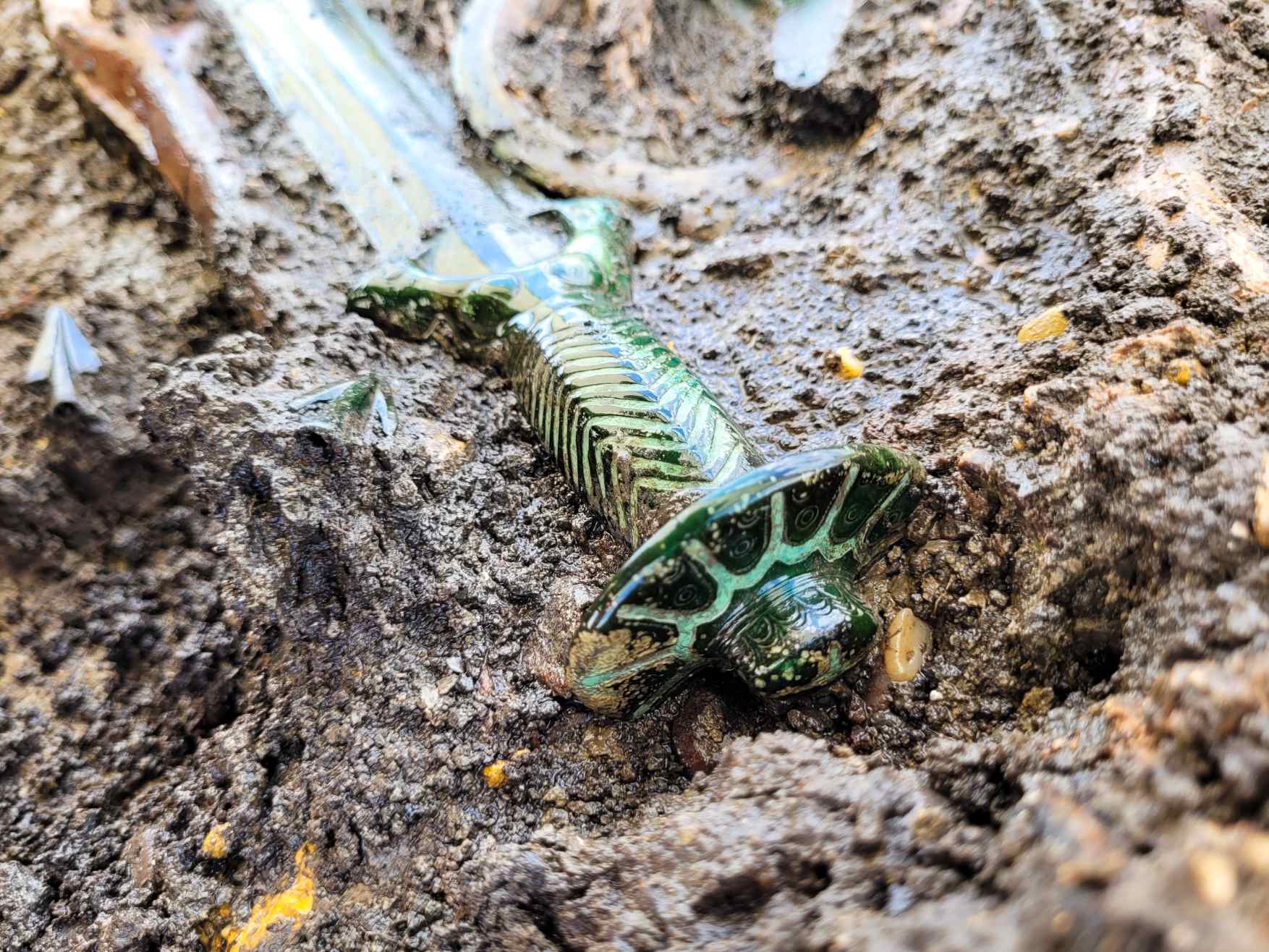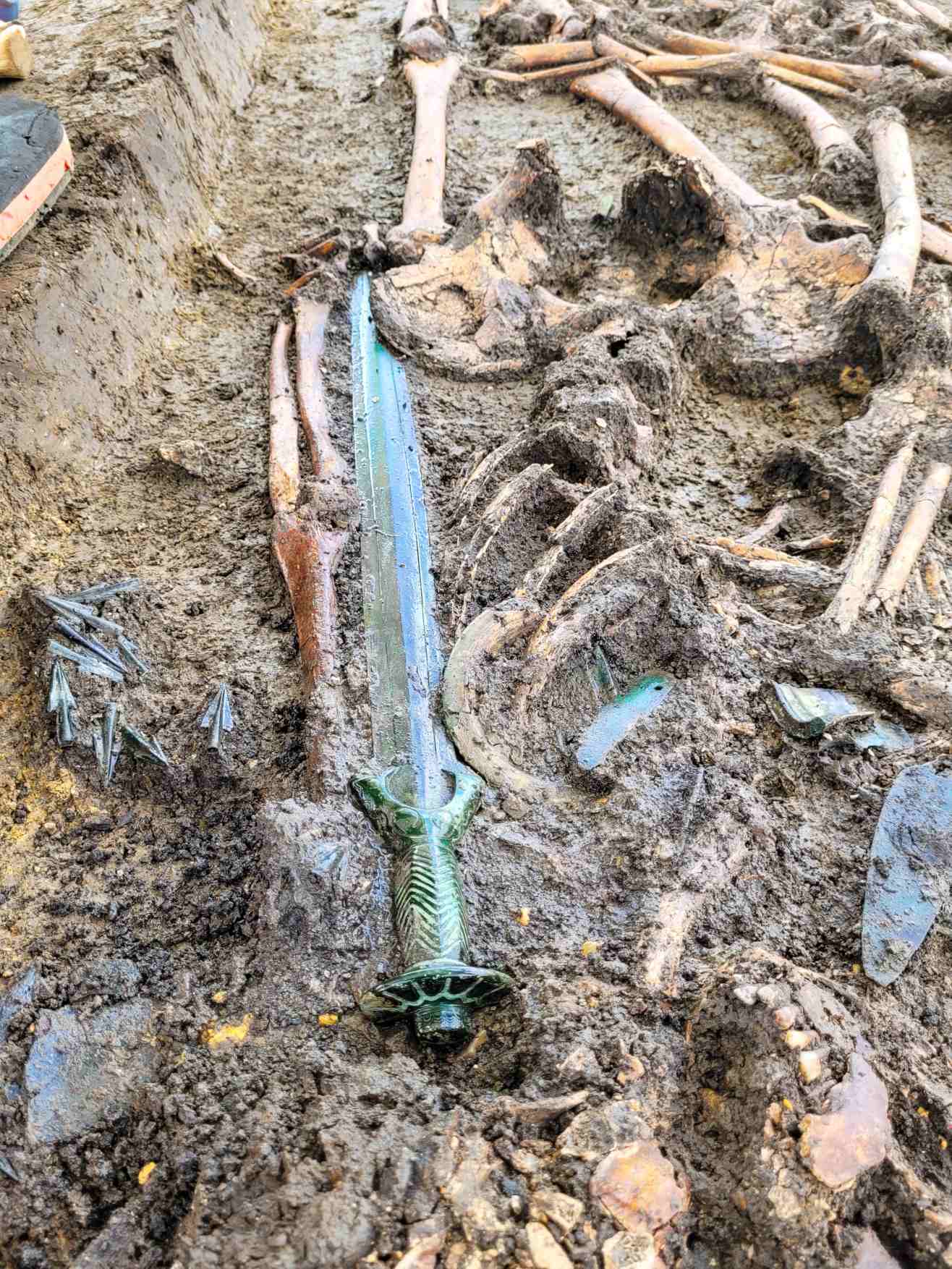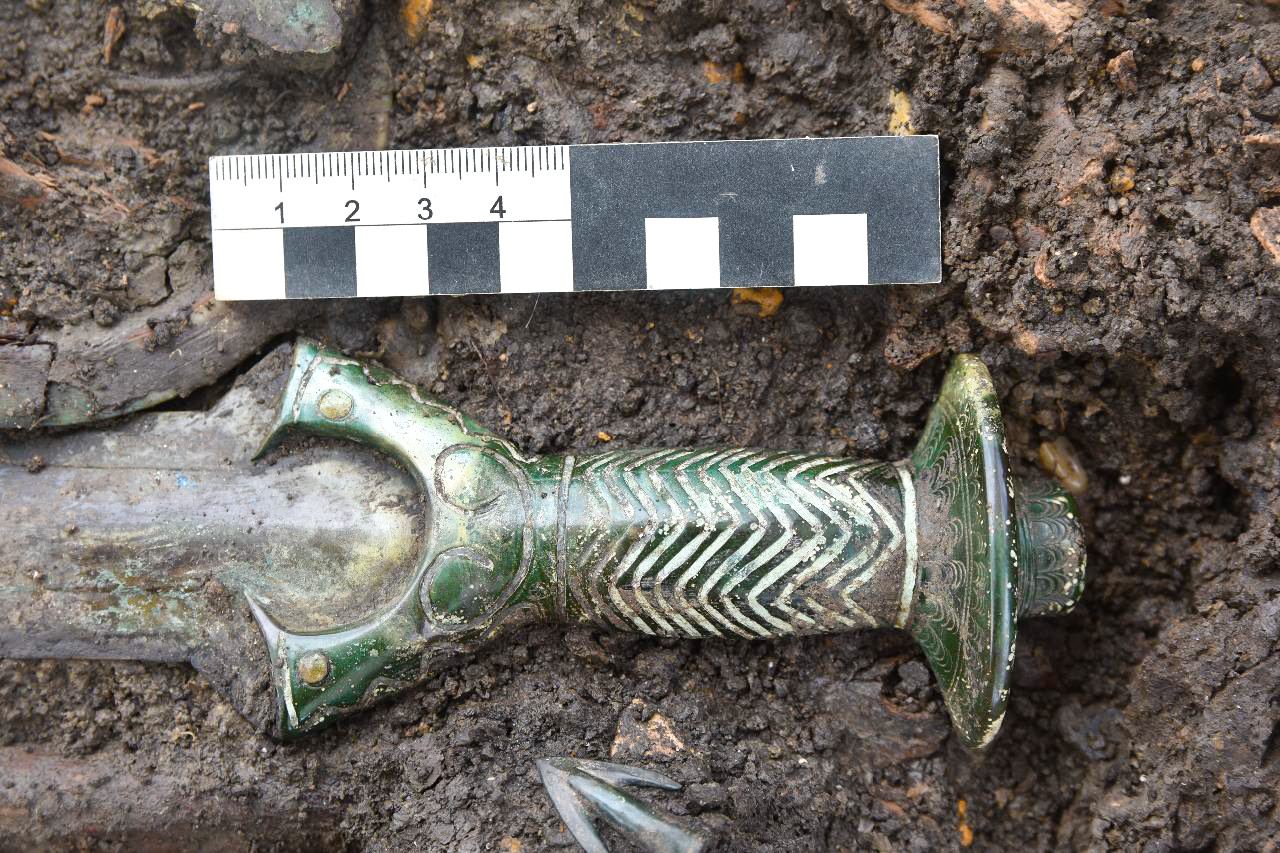A bronze sword made more than 3,000 years ago that is so well-preserved it “almost still shines” has been unearthed in Germany, officials say.

Bavaria’s state office for the preservation of historical monuments says the sword, which is believed to date back to the end of the 14th century BC – the middle of the Bronze Age – was found during excavations last week in Noerdlingen, between Nuremberg and Stuttgart in southern Germany.
The sword has an octagonal hilt and comes from a grave in which three people – a man, a woman, and a boy – were buried in quick succession with bronze objects, the Bavarian office said in a statement on June 14. It was not yet clear whether the three were related to each other and, if so, how.

Prof Mathias Pfeil, the head of the Bavarian state office for the preservation of historical monuments (BLfD), said: “The sword and the burial still need to be examined so that our archeologists can categorize this find more precisely. But we can already say that the state of preservation is extraordinary. A find like this is very rare.”
It’s unusual to find swords from the period, but they have emerged from burial mounds that were opened in the 19th century or as individual finds, the office said.

The Bronze Age in Western Europe is renowned for its advanced metallurgy and the skilled work of metallurgists, and this sword is a stunning example of this. Metallurgy played a pivotal role in the development of societies and the advancement of technology. This era, which lasted from around 2500 BC to 800 BC, was characterized by the widespread use of bronze, a copper-based alloy, for the creation of tools, weapons, and other essential objects.
The unique design is reflective of the expertise and artistry of its creator. Octagonal swords like this one were exclusively crafted by highly skilled blacksmiths. The hilt, secured to the blade with two rivets using a technique known as overlay casting, exhibits remarkable craftsmanship. Surprisingly, despite its apparent functionality, the blade bears no visible signs of wear or cut marks, suggesting that it may have served a ceremonial or symbolic purpose.



